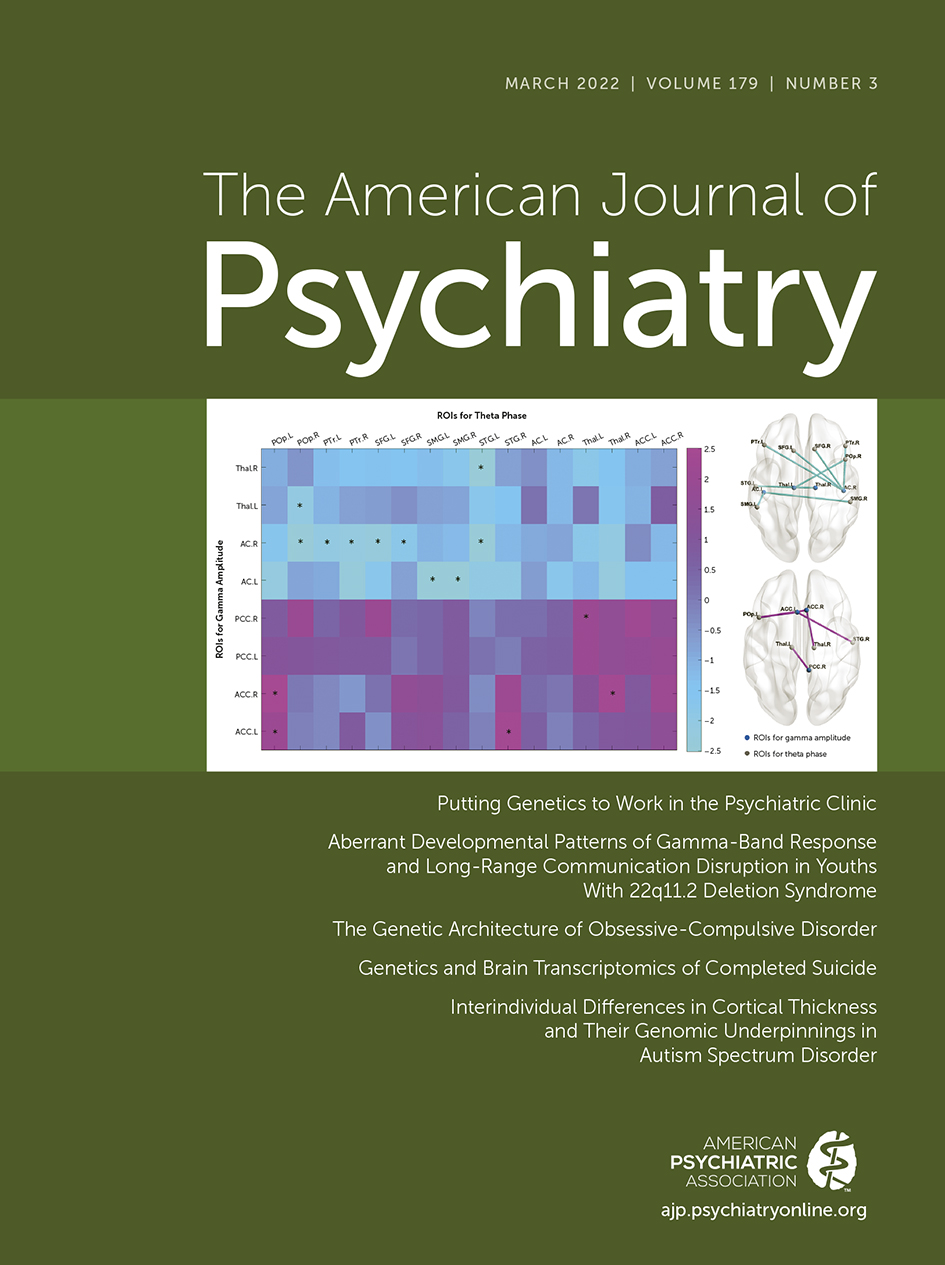Aberrant Developmental Patterns of Gamma-Band Response and Long-Range Communication Disruption in Youths With 22q11.2 Deletion Syndrome
Abstract
Objective:
Brain oscillations play a pivotal role in synchronizing responses of local and global ensembles of neurons. Patients with schizophrenia exhibit impairments in oscillatory response, which are thought to stem from abnormal maturation during critical developmental stages. Studying individuals at genetic risk for psychosis, such as 22q11.2 deletion carriers, from childhood to adulthood may provide insights into developmental abnormalities.
Methods:
The authors acquired 106 consecutive T1-weighted MR images and 40-Hz auditory steady-state responses (ASSRs) with high-density (256 channel) EEG in a group of 58 22q11.2 deletion carriers and 48 healthy control subjects. ASSRs were analyzed with 1) time-frequency analysis using Morlet wavelet decomposition, 2) intertrial phase coherence (ITPC), and 3) theta-gamma phase-amplitude coupling estimated in the source space between brain regions activated by the ASSRs. Additionally, volumetric analyses were performed with FreeSurfer. Subanalyses were conducted in deletion carriers who endorsed psychotic symptoms and in subgroups with different age bins.
Results:
Deletion carriers had decreased theta and late-latency 40-Hz ASSRs and phase synchronization compared with control subjects. Deletion carriers with psychotic symptoms displayed a further reduction of gamma-band response, decreased ITPC, and decreased top-down modulation of gamma-band response in the auditory cortex. Reduced gamma-band response was correlated with the atrophy of auditory cortex in individuals with psychotic symptoms. In addition, a linear increase of theta and gamma power from childhood to adulthood was found in control subjects but not in deletion carriers.
Conclusions:
The results suggest that while all deletion carriers exhibit decreased gamma-band response, more severe local and long-range communication abnormalities are associated with the emergence of psychotic symptoms and gray matter loss. Additionally, the lack of age-related changes in deletion carriers indexes a potential developmental impairment in circuits underlying the maturation of neural oscillations during adolescence. The progressive disruption of gamma-band response in 22q11.2 deletion syndrome supports a developmental perspective toward understanding and treating psychotic disorders.



